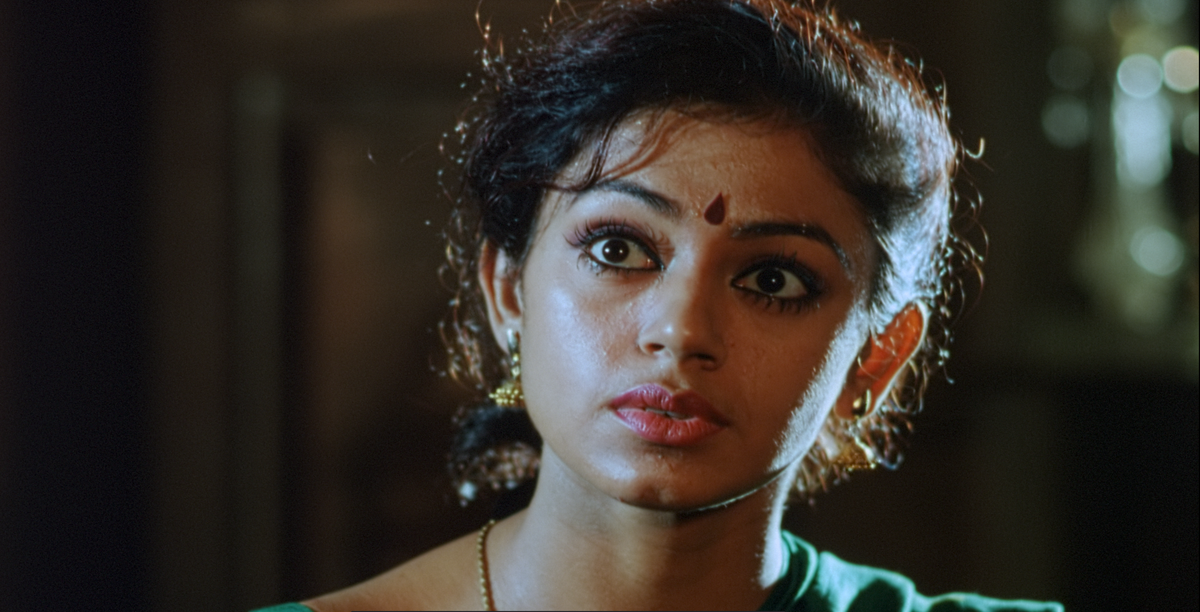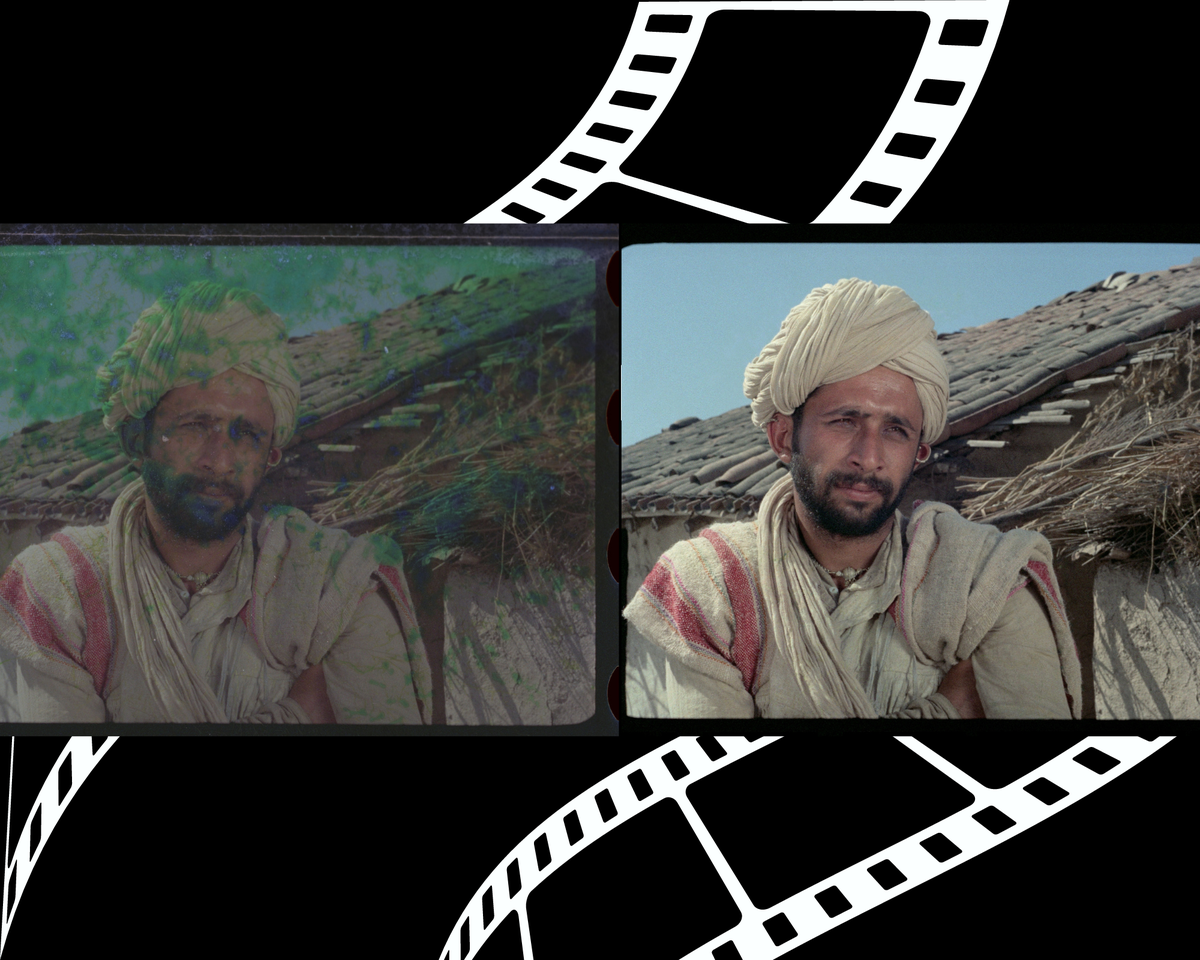Table of Contents
There were two Vijay hits in the Tamil film industry this year. In one, GOAT, he’s 50 years old. In the other, he’s 30.
If you’re wondering if this is some cutting-edge AI de-ageing, let me stop you. The latter was the re-release of Ghilli, the 2004 superhit that cemented his position at the top of the Kollywood pecking order. If media reports are anything to go by, the re-released version grossed in the excess of ₹50 crore at the box office, matching the then-record collections from its original release.original release.

A still from Ghilli
Ghilli is not an isolated incident. If you paid any attention to the schedule in your neighbourhood theatres, you would have noticed a trend of old films being re-released. From decades-old classics to more recent cult films, there is a wide range of titles finding their way back to the theatres.
It all began with the Amitabh Bachchan retrospective in October 2022. Or did it begin with the re-release of Mahesh Babu’s 2006 hit Pokiri in August 2022? It’s actually a bit tricky to pinpoint the precise origin of this phenomenon, but there are a few things we can say with some certainty.
For one, it happened post-lockdown. While there have been re-releases in the past, these were sporadic one-offs. It was when a few re-releases happened in 2022 and 2023, in different markets, that the trend grew legs. People started to realise there was a viable business model here.
Pulling in the crowds
2024 is the year that the re-release business achieved critical mass. “If we have to say when the momentum picked up, it was with the films that released this year, starting with Rockstar and Laila Majnu,” says Niharika Bijli, lead strategist of multiplex chain PVR INOX. “It opened our eyes to the fact that even a film that is available on OTT is able to pull in extraordinary numbers to the theatre.”
Niharika Bijli
| Photo Credit:
Exposure Visuals
Before we examine their motivations, it’s worth understanding that broadly there are two kinds of re-releases. On the one hand, there are more recent films like Tumbbad (2018), which have either been shot on digital or have a pristine 4K digital print available to be deployed for re-release. With these, there are no major technical costs or hurdles.
The far more challenging type is movies such as Manichitrathazhu (1993), which were originally shot and released on film, and need to be ‘remastered’ into a 4K digital print. This can be a massively time consuming and involved process that starts with getting hold of the original camera negative. “If a film is maintained well, then the moment you scan it, you’re ready to remaster it,” says Abhishek Prasad, chief technology officer of Prasad Corporation in Chennai, the pre-eminent facility for film restoration in India. “Some of the films that are badly maintained become extremely brittle, or are stuck layer to layer, or have the chemical bleeding out.”

Abhishek Prasad
| Photo Credit:
Special arrangement
Film assessment at Prasad Corporation
| Photo Credit:
Special arrangement
India is historically bad at archiving and maintaining films. Many producers used to care very little about storing their old film reels properly once they stopped earning any money. Some would be left for storage with the film labs that offered storage facilities. And then COVID hit. “At that time, many labs shut down. Negatives that had been taken from the vault for scanning, simply melted,” says Unaise Adivadu, operations head at Matinee Now, the company that oversaw the remaster and re-release of Manichitrathazhu.
The challenge of Manichitrathazhu
While attempting to restore the Mohanlal-Shobana blockbuster, Adivadu and his team could not even locate a usable camera negative, and had to fall back on restoring from a positive print. This is an inferior starting point. Even in its original form, a positive print is a somewhat degraded version of the original camera negative.

Unaise Adivadu
| Photo Credit:
Special arrangement
Once you have the film, the first task is to clean it, using a combination of manual and mechanised processes. It is then scanned at a very high resolution of up to 14K to get an enormous file measuring several terabytes, which is then digitally worked on to further repair defects, including the effects of mould, fungus, perforation tears and the like. Finally, the film is colour graded to replicate the original look to the extent possible, and it’s ready for release.
Manichitrathazhu also had another challenge — its soundtrack was recorded in mono, a single channel of sound, while current theatrical releases are distributed with multi-channel Dolby Atmos soundtracks. So the folks at Matinee Now took the dialogues and songs from the original mono, but re-recorded much of the score and sound effects to arrive at a multi-channel mix. Restoration like this can therefore be an expensive proposition. “We’ve done titles for ₹4-₹5 lakh, and others for up to ₹1 crore,” says Prasad. “It just depends on the time and effort that has to go into the restoration.”

A still from Manichitrathazhu
Manichitrathazhu’s re-release went on to be a great success. And this has been the case for most of the big-ticket re-releases in the recent past. As producers, distributors and exhibitors realise that there is a relatively lower-cost asset that is available for them to deploy in theatres, everyone wants in on the action. “Timing is crucial. Re-releases often perform best during leaner periods when there are fewer new releases. We work with distributors to ensure that re-releases don’t overlap with major blockbusters” says PVR INOX’s Bijli.
‘A guaranteed good time’
But what is pushing the crowds back into the theatres to see these films? The oft-cited answer is nostalgia, but is there really, for instance, ₹50 crore worth of nostalgia in Tamil Nadu? There are almost definitely other factors at play. “Back in the 1990s or 2000s, you would go to a theatre not knowing how a film was going to be,” says film critic Tanul Thakur. “It was two hours of pristine immersion. Nowadays, with the OTT culture, people want to control the experience, as opposed to allowing the experience to control us. We are wary of disappointment.”

Tanul Thakur
| Photo Credit:
Special arrangement
This is definitely one of the great pluses of watching a re-release: a guaranteed good time. “You are not discovering. You are reassuring yourself,” he says. There is also the fact that with many of these classic movies, the younger audience has never had the communal experience of watching them in the hall.
“Many generations have not seen Dilip Kumar or Dev Anand films in the theatre,” says Shivendra Dungarpur, founder-director of the Film Heritage Foundation, which is responsible for restoring and re-releasing several classic films from across the country. “I screened Mahal (1949) in July and 1,500 people turned up on a rainy day. Why? They wanted to see Ashok Kumar, they wanted that theatrical experience.”

Bijli remembers going to see K3G “and people in the hall were saying the dialogues aloud”. This kind of communal reliving of a film’s highlights, further testified to by videos of fans dancing in the aisles for the songs from Ghilli, is something that you cannot quite replicate with a new film.
Perhaps another consideration is that re-releases are stepping in where new releases are falling short. At least for Bollywood and the Tamil industry, the last year was brutal, with few hits to speak of. “If Manjummel Boys, a Malayalam film, is one of the biggest hits in Tamil Nadu this year, then they are really on shaky ground” says Aditya Shrikrishna, a Chennai-based film critic. “There is a complete homogeneity of films that are being made, and this has pushed a particular kind of audience away from the theatre. Because we don’t see as many rom-coms, or as many softer [lighter] films.”
Aditya Shrikrishna
| Photo Credit:
Special arrangement
There is also the simple physical immersion of watching a film in glorious 4K resolution on a giant screen. This holds appeal even if the title is available for free on YouTube. At the end of the day, the re-release phenomenon is a classic example of a situation where everyone comes out a winner.
The writer and photographer is based in Chennai.
Published – October 11, 2024 11:11 am IST

